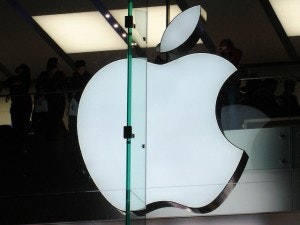
That’s the abundantly clear takeaway from the latest figures by market researcher Strategy Analytics. While the 37.4 million iPhones that Apple sold in the first quarter were better than most expected, the figure represented just 7% growth from a year ago. Meanwhile, rivals are gaining traction primarily in lower market segments that Apple Inc. (NASDAQ:AAPL) has historically left alone.
| Vendor | Q1 2012 Units | Q1 2012 Market Share | Q1 2013 Units | Q1 2013 Market Share |
|---|---|---|---|---|
| Samsung | 44.4 million | 28.9% | 69.4 million | 33.1% |
| Apple | 35.1 million | 22.8% | 37.4 million | 17.9% |
| LG | 4.9 million | 3.2% | 10.3 million | 4.9% |
| Huawei | 5.1 million | 3.3% | 10 million | 4.8% |
| ZTE | 4.6 million | 3% | 9.1 million | 4.3% |
| Others | 59.7 million | 38.8% | 73.3 million | 35% |
| Total | 153.8 million | 100% | 209.5 million | 100% |
Source: Strategy Analytics.
Strategy Analytics calls out LG as a particularly strong performer, more than doubling its units over the past year and climbing to the No. 3 spot. LG is using some of Samsung’s own tactics against it, including wide distribution. Vertical integration and product imitation aren’t hurting its prospects, either.
The total market grew by an impressive 36% to 209.5 million units — meaning Apple Inc. (NASDAQ:AAPL)’s unit sales significantly underperformed the broader market. CEO Tim Cook specifically addressed this on the last conference call, when asked by Bernstein analyst Toni Sacconaghi.
Cook acknowledged that even after normalizing for channel inventory to arrive at actual sell-through, Apple Inc. (NASDAQ:AAPL) still “grew less than” the broader market. He took the opportunity to mention other relevant statistics beyond unit share that Apple considers when evaluating its overall health, including customer satisfaction and loyalty, ecosystem commerce, and usage, to name a few. It’s also worth noting that lower market segments are less profitable, so rivals gaining unit share doesn’t translate into growing profit share. Apple still owns that department.
Cook then hinted that Apple Inc. (NASDAQ:AAPL) would indeed be focusing on affordability in emerging markets going forward:
Now, that said, we see an enormous number of first time smartphone buyers coming to market, particularly, in certain countries around the world. And so what we’ve done with that is and we started last quarter is we’ve made the iPhone 4 even more affordable and which has made it more attractive to first time buyers and [our supply caught up with demand] toward the late in the quarter last quarter and we are continuing to do that in other markets.
The iPhone 4, a three-year-old smartphone, is still selling strong, thanks in large part to Apple Inc. (NASDAQ:AAPL)’s ecosystem advantages and Apple’s recent moves toward affordability in important markets like Brazil, India, and China (the “B,” “I,” and “C” in “BRIC”).
Clearly, tapping emerging markets is on Cook’s mind. Clearly, an affordable iPhone is in the works.
The article Apple Is Hitting a Ceiling — and Tim Cook Knows It originally appeared on Fool.com.
Fool contributor Evan Niu, CFA owns shares of Apple. The Motley Fool recommends and owns shares of Apple.
Copyright © 1995 – 2013 The Motley Fool, LLC. All rights reserved. The Motley Fool has a disclosure policy.
